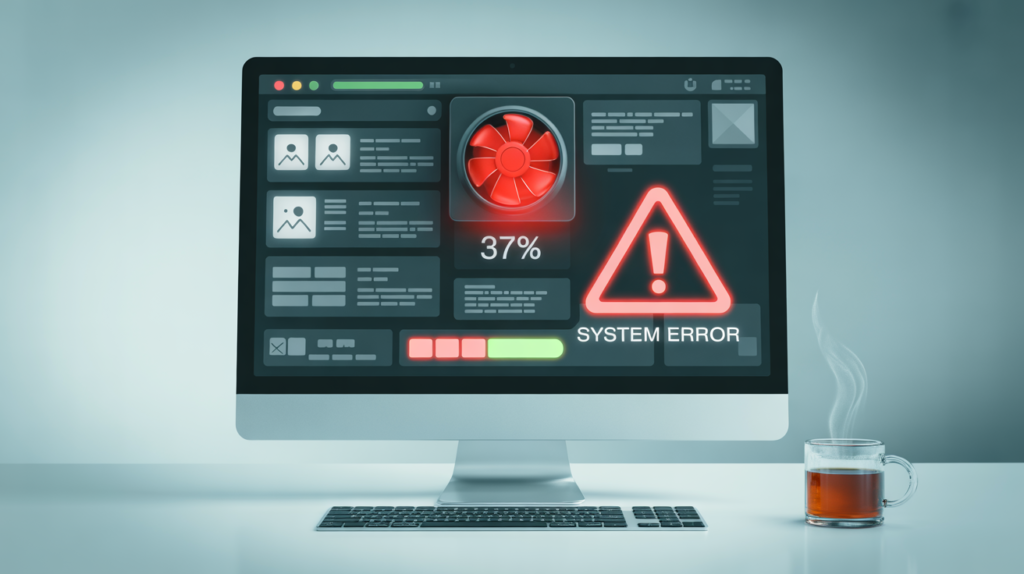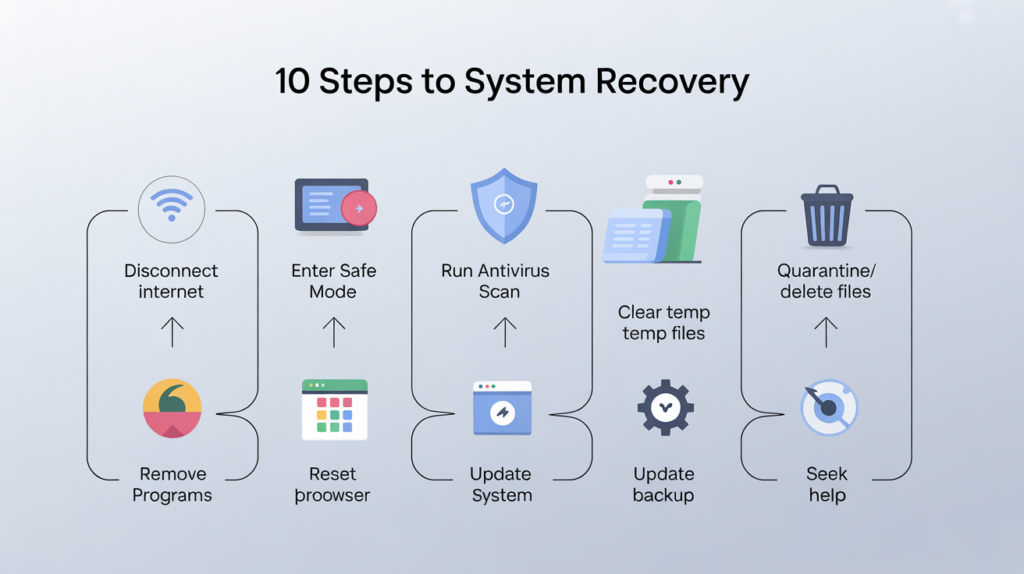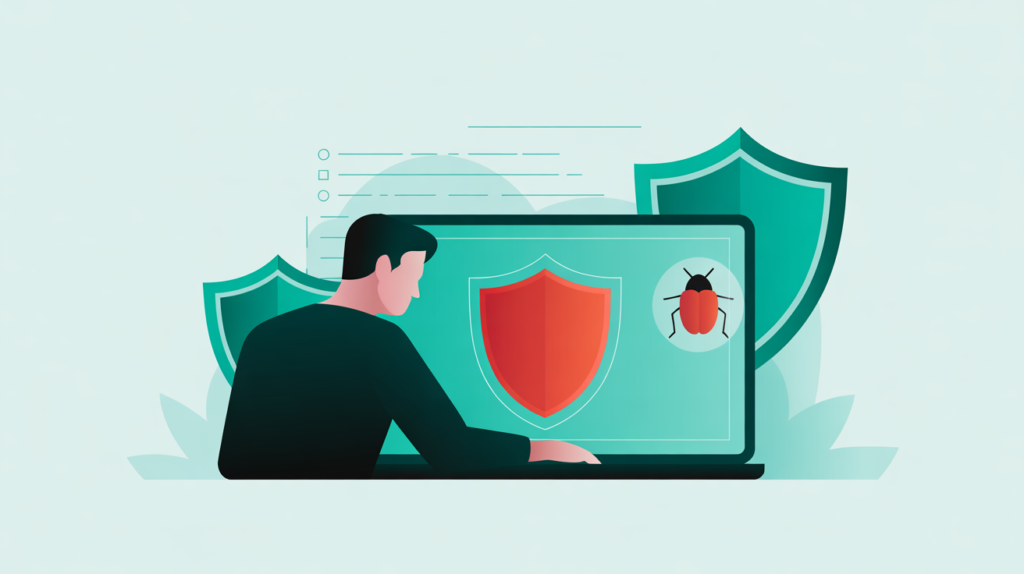Introduction
Imagine sitting down to work, only to find your computer slowing down, bombarded with pop-ups, or acting in ways you never authorized. Chances are, your system has been infected with malware. If you’ve ever wondered how to remove malware from computer systems safely, without feeling overwhelmed—you’re in the right place.
This guide is designed for beginners, breaking down the process step by step while sharing practical insights, real-world experiences, and tips that cybersecurity experts swear by.
What is Malware and Why Should You Care?
Malware (short for malicious software) refers to any software designed to damage, exploit, or otherwise compromise your computer. It comes in many forms:
- Viruses: Programs that replicate and spread, often corrupting files.
- Spyware: Monitors your activity and steals personal data.
- Ransomware: Locks your files until you pay a ransom.
- Adware: Bombards you with unwanted ads and pop-ups.
- Trojans: Disguised as legitimate software but secretly harmful.
Even big companies have fallen victim to malware attacks. For everyday users, it can mean stolen passwords, identity theft, or losing years of personal photos and documents.

👉 If you’re interested in how these threats spread, check out our post on cybersecurity basics
Signs Your Computer Might Be Infected
Some common red flags include:
- Sluggish performance or frequent crashes
- Unexpected pop-ups or ads, even when offline
- Programs opening or closing on their own
- Changes to browser settings (e.g., a new homepage you didn’t set)
- Antivirus warnings you didn’t trigger
- Unexplained data usage or high CPU usage
Personal tip: Years ago, I noticed my laptop fan running loudly even when idle. It turned out malware was mining cryptocurrency in the background. That tiny clue saved me from bigger damage.

Step by Step Guide: How to Remove Malware from Computer
1. Disconnect from the Internet
Malware often communicates with servers or spreads via networks. Disconnecting from Wi-Fi or unplugging Ethernet stops further damage while you troubleshoot.
2. Enter Safe Mode
Safe Mode loads only essential system files, making it harder for malware to interfere.
- For Windows: Restart → press F8/F11 → choose Safe Mode with Networking.
- For Mac: Restart → hold Shift until the Apple logo appears.
3. Run an Antivirus or Anti-Malware Scan
Use trusted tools like:
👉 We’ve reviewed the best antivirus software for home users check our security tools guide for recommendations.
4. Quarantine or Delete Infected Files
Follow your antivirus prompts. Quarantine suspicious files until you’re sure they’re safe.
5. Clear Temporary Files
Malware often hides in cache or temp files. Use Disk Cleanup (Windows) or CleanMyMac (Mac).
6. Check Installed Programs & Browser Extensions
Uninstall apps you don’t recognize. Check browsers for shady extensions and remove them.
7. Reset Browser Settings
Restore your browser defaults to kick out hidden malware add-ons.
8. Update Your Operating System & Software
Install updates—most malware exploits outdated systems.
9. Restore from Backup
If malware caused irreversible damage, restore your system from a clean backup.
10. Seek Professional Help
If you’re stuck, a professional malware removal service may be the safest route.

Table: DIY Malware Removal vs. Professional Help
| DIY Malware Removal | Professional Help |
|---|---|
| Cost-effective (often free) | Can be expensive ($100–$300) |
| Great for mild infections | Necessary for deep/system-wide infections |
| Learn valuable computer skills | Experts handle everything for you |
| Time-consuming (hours) | Faster resolution |
Prevention: How to Keep Malware Away
Here are the golden rules:
- Install updates regularly
- Use reliable antivirus software
- Avoid suspicious downloads and attachments
- Enable firewalls
- Backup your data frequently
👉 For a full breakdown, check our article on safe browsing practices.
For broader security awareness, StaySafeOnline.org is a great external resource.
A Fresh Perspective: Why Beginners Struggle
Many beginner guides stop at “install antivirus.” But here’s the truth: malware evolves faster than most antivirus updates. A layered approach updates, backups, firewalls, and habits is essential.
When I helped a friend remove ransomware, she nearly paid the ransom. Luckily, she had a clean backup. We restored her files without spending a dime.
Key Takeaways
- Disconnect from the internet immediately when malware is suspected.
- Use Safe Mode and updated antivirus scans.
- Remove suspicious programs, reset browsers, and clear temp files.
- Prevention (updates, antivirus, backups) is your best long-term defense.
Conclusion
Learning how to remove malware from computer systems may seem intimidating, but with the right steps, even beginners can regain control. Think of it as first aid for your PC you’re not just fixing a problem, you’re protecting your future.
Stay proactive: secure your system, back up your files, and practice safe browsing.
Call-to-Action (CTA)
💬 Have you ever dealt with a stubborn malware infection? Share your experience in the comments below!
And if you found this guide helpful, don’t miss our tech security tips and tutorials (internal link) to level up your digital safety.



